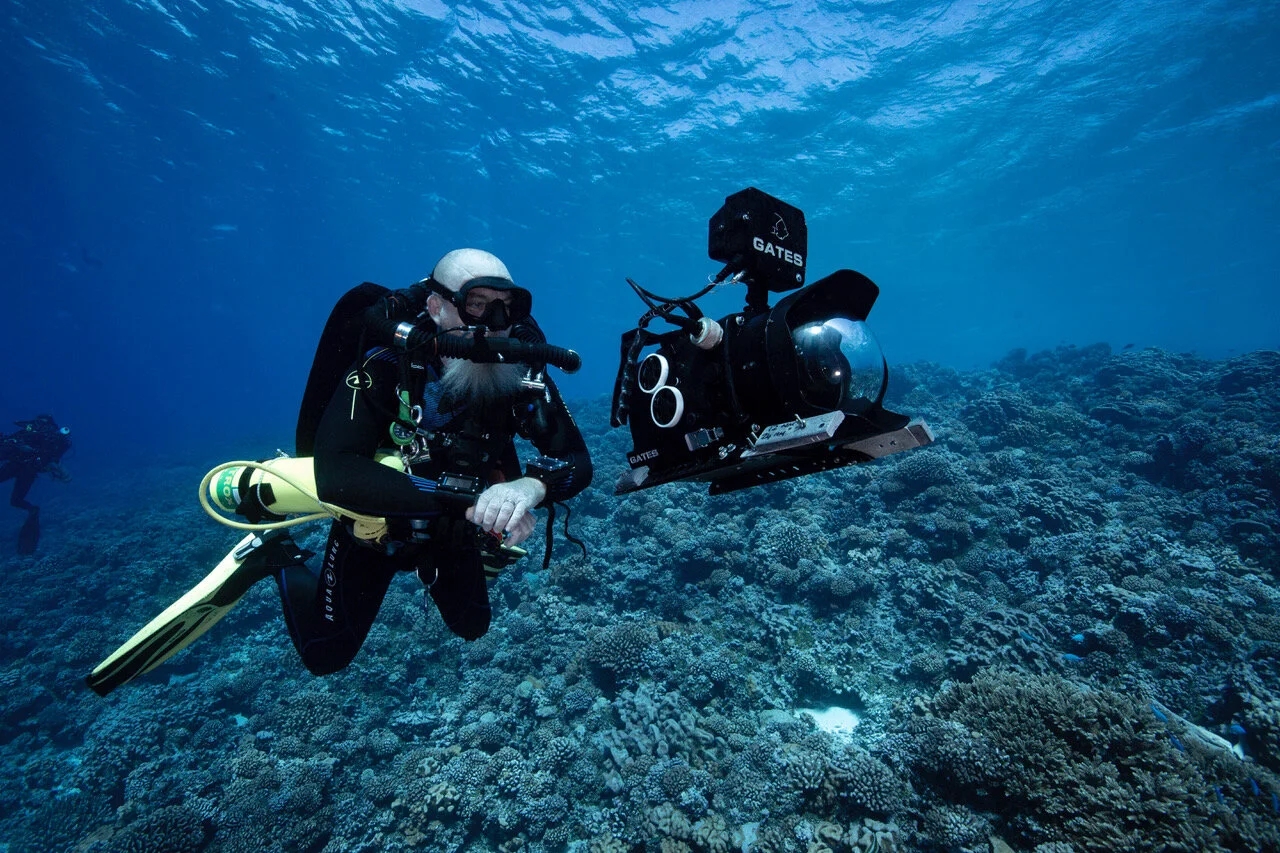ABOUT
PAUL COLLINS MSc
How it all started . . .
I spent the first 14 years of my working career in Marketing, eventually becoming the head of marketing communications for a large Blue Chip Company in the UK. I then abandoned all the trappings of corporate life to pursue my dream of working on and around tropical marine environments. I volunteered on a number of research projects across the pacific that fed my passion for the marine environments and photography and videography.
These few years of volunteering and self study culminated in a research voyage that changed my life forever. Undertaking a rapid ecological assessment around Truk Lagoon and it's outer Islands I was persuaded, by some the worlds prominent marine scientists, to return to University and take a Master Degree in a marine related subject so that I could better understand and contribute to preserving these fragile ecosystems.
So with a new direction and desire to further my knowledge I took a year out from the Pacific returning to the UK to complete a Master Degree in Integrated Coastal Zone Management, with my Thesis on Mapping Marine habitats using satellite imagery and very detailed bathymetric data (depth). After receiving a distinction I returned to the Pacific to continue researching, photographing and filming and in 2012 became a product manager, with Richard Barnden, of Unique Dive Expeditions at Palau’s leading SCUBA Diving Operator, Sam’s Tours.
Over the past few years I have continued research on a variety of marine related subjects with a significant amount of time allocated to spawning aggregations throughout Palau. In an effort to better understand the behavioural aspects of these spawning aggregations I took the plunge, in 2012, and invested in a Red camera so I could use the high frame rates to slow down the action. This has led to some remarkable insights into the spawning behaviour that have not been documented before. In addition to the ecology of these events, why they happen at these locations has been a big question for me and to that end every time I have visited these unique events I captured bathymetry data that allows me to 3D model the spawning locations with a view to comparing and contrasting these locations against other spawning locations through Palau and beyond.
Over the last few years I have devoted more and more of my time to filming on location in Palau and beyond for many of the worlds top Natural History Production houses. The combination of being an experienced rebreather diver, having accumulated thousands of hours documenting marine life behaviour and owning a Red camera with a Gates housing has given me a unique set of skills that I am able to offer.
